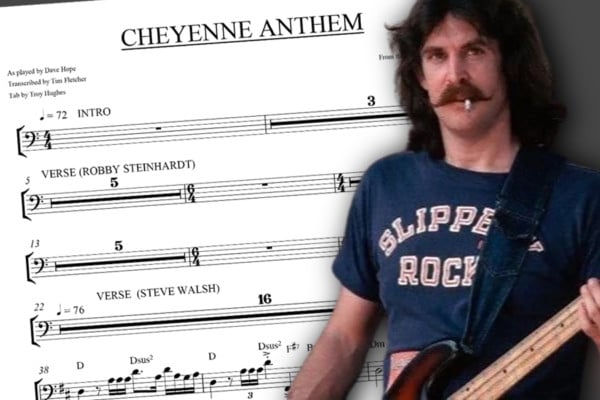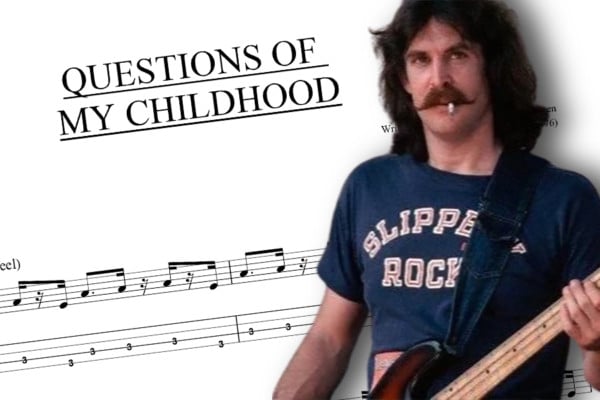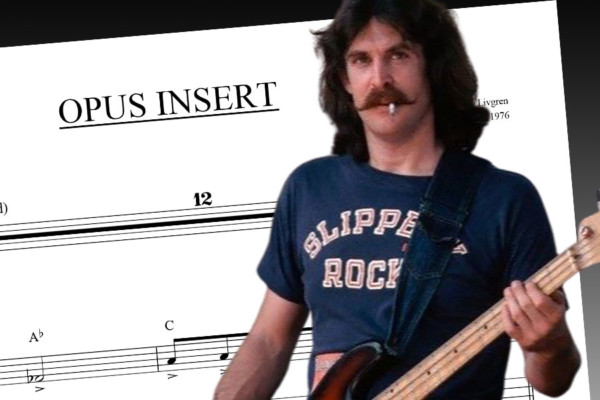Bass Transcription: Finn Guttormsen’s Bass Line on Farmers Market’s “Dusty Traditions”
The other day I was watching Michael Brecker’s version of ¨Nothing Personal” in 9/8 meter. I really liked this version and the group that played it. After some research, I found a Norwegian band called Farmers Market. I then contacted bassist Finn Guttormsen, who during the chat explained to me why they play in irregular meters. In his university, the contrabass teacher played the song “Mystere de voix Bulgares” for him, which translates to “The mystery of Bulgarian voices.” Soon after – with some university mates – they formed the group, Farmers Market. After listening to a disc of Bulgarian wedding music called Balkanology by Ivo Papasov, their lives would change forever.
If you’re unfamiliar with Balkan music, I want to share this quote from Wikipedia on asymmetric and odd meters:
“One of the most distinctive features of Balkan folk music is the complexity of its rhythms in comparison to Western music. Although it uses Western meters such as 2/4, 3/4, and 4/4, Balkan music also includes meters with 5, 7, 9, 11, 13, and 15 beats per measure, sometimes referred to as “asymmetric meters” or Odd meters. These can often be understood as combinations of groups of “quick” and “slow” beats. For example, the dance lesnoto (“the light/easy one”) has a meter of 7 beats with emphasis on the first, fourth, and sixth beats. This can be divided into three groups, a “slow” unit of 3 beats and two “quick” units of 2 beats, often written 3-2-2.
Each basic folk dance type uses a distinct combination of these rhythmic ‘units’. Some examples are: rachenitsa (7 beats divided: 2-2-3), paidushko horo (5 beats: 2-3), eleno mome (7 beats: 2-2-1-2), kopanitsa (11 beats: 2-2-3-2-2), Bucimis (15 beats: 2-2-2-2-3-2-2), and pravo horo, which can either be standard 4/4 or 6/8 and Daichovo Horo 9 (2-2-2-3).”
Farmers Market’s “Dusty Traditions” is in 9/8 meter as the Daichovo Horo (2-2-2-3) At first, it took me a lot to get used to 9/8, especially the letter H (measure 72) in the clarinet/drums duet section. I get lost all the time, but I worked this song for about three weeks, and I feel more comfortable. The song is mainly written in 9, but there are some places that is written in 5, bars (measures 114-117, 128-131, 134-137, 164-167, 170-173) that are much easier to understand because we associate them with progressive rock. In letter N (bars 138-153) we have different bars in 4, 6 and 5 and then from bar 174 until the end, we have a Groove in 9.
Try reading the score many times before trying to play it; there are some rhythmic groupings that are hard to read at first. It can be helpful if you search Daichovo Horo on YouTube and see how it is danced and see the accents in 2 + 2 + 2 + 3.
Many thanks to Finn Guttormsen who was very kind in explain me some of his music, and helping me in the transcription of this song.
Let me know what music you are interested in that I could play and transcribe.
Download the transcription and follow along with the video below.
Have Fun, and see you next time.
Marcelo Cordova is an electric and acoustic bass player from Chile. He has released five solo albums. Marcelo endorses EBS amps and play Pavel Basses.



